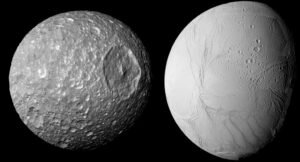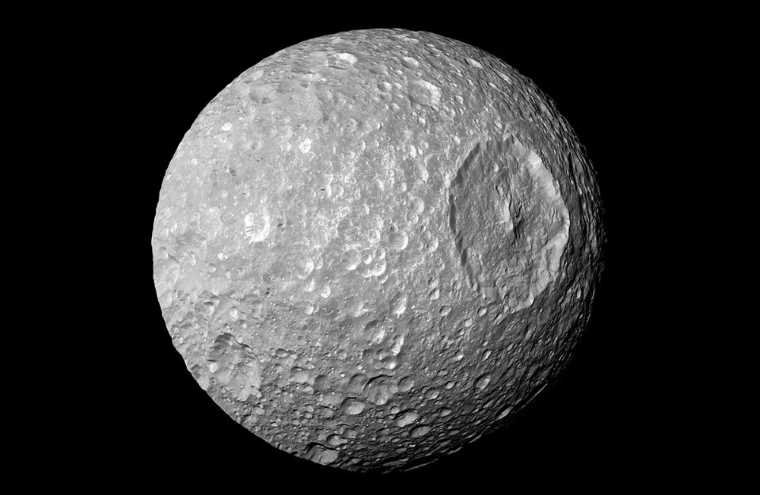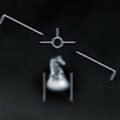An international team of researchers has announced the discovery of a secret, planet-wide ocean hidden beneath the icy crust of Saturn’s smallest moon, Mimas.
Notorious for its resemblance to the “Death Star” in the Star Wars movie franchise, these findings not only mark Mimas as a space body worthy of further study but also place it on a rather exclusive list of ocean worlds.
“This discovery adds Mimas to an exclusive club of moons with internal oceans, including Enceladus and Europa,” explained Dr. Nick Cooper, a co-author of the study and Honorary Research Fellow in the Astronomy Unit of the School of Physical and Chemical Sciences at Queen Mary University of London.


“The existence of a recently formed liquid water ocean [also] makes Mimas a prime candidate for study, for researchers investigating the origin of life,” the researchers adds.
Cassini Mission Still Revealing Saturn’s Secrets
To make this tantalizing discovery, Cooper and his colleague Dr. Valéry Lainey of the Observatoire de Paris-PSL formed an international research team to pour through data collected by NASA’s Cassini mission. Launched in 1997, Cassini ultimately spent over 13 years orbiting and studying Saturn and its moons until it crashed into the gas giant in 2015.
According to the researchers, subtle changes in Mimas’ orbit allowed them to infer the presence of the subsurface ocean. In fact, the Cassini observations were detailed enough that the researchers say they were also able to estimate the size and depth of the moon’s hidden ocean. Perhaps even more surprising, the researchers say this discovery came as a surprise.
“Mimas is a small moon, only about 400 kilometers in diameter, and its heavily cratered surface gave no hint of the hidden ocean beneath,” said Cooper.
Previous research by the Southwest Research Institute had hinted at the presence of a subsurface ocean on Mimas, but this latest finding seems to solidify the case.
The published study, which appears in the journal Nature, also involved analysis of the complex tidal interactions between Saturn and Mimas. That analysis, the researchers explain, led to the discovery of an unexpected “irregularity” in Mimas orbit, which revealed its subsurface ocean was created relatively recently.
“[Mimas’] ocean is remarkably young,” Cooper explained, “estimated to be only 5 to 15 million years old.”
Cooper also notes that this discovery was a collaborative effort, which not only includes himself and Dr. Lainey, but a group of international colleagues who were co-authors on the study. Cooper also tips his hat to the folks at NASA who are also responsible for the growing list of successes connected to the research done by Cassini.
“This has been a great team effort,” said Cooper, “with colleagues from five different institutions and three different countries coming together under the leadership of Dr. Valéry Lainey to unlock another fascinating and unexpected feature of the Saturn system, using data from the Cassini mission.”
Moon Beneath Mimas a Prime Target to Study the Origin of Life
Within this announcement, the researchers note that the discovery of a moon beneath the surface of Minas unlocks the possibility of further understanding the formation of oceans in the cosmos. Perhaps even more tantalizing, Cooper, Lainey, and their colleagues believe that such a young body of water this close to home could be a boon to astrobiologists trying to unravel the mysteries of life.
“The discovery of Mimas’s young ocean has significant implications for our understanding of the potential for life beyond Earth,” the researchers explain. “It suggests that even small, seemingly inactive moons can harbor hidden oceans capable of supporting life-essential conditions. This opens up exciting new avenues for future exploration, potentially leading us closer to answering the age-old question: are we alone in the universe?”
Christopher Plain is a Science Fiction and Fantasy novelist and Head Science Writer at The Debrief. Follow and connect with him on X, learn about his books at plainfiction.com, or email him directly at christopher@thedebrief.org.

